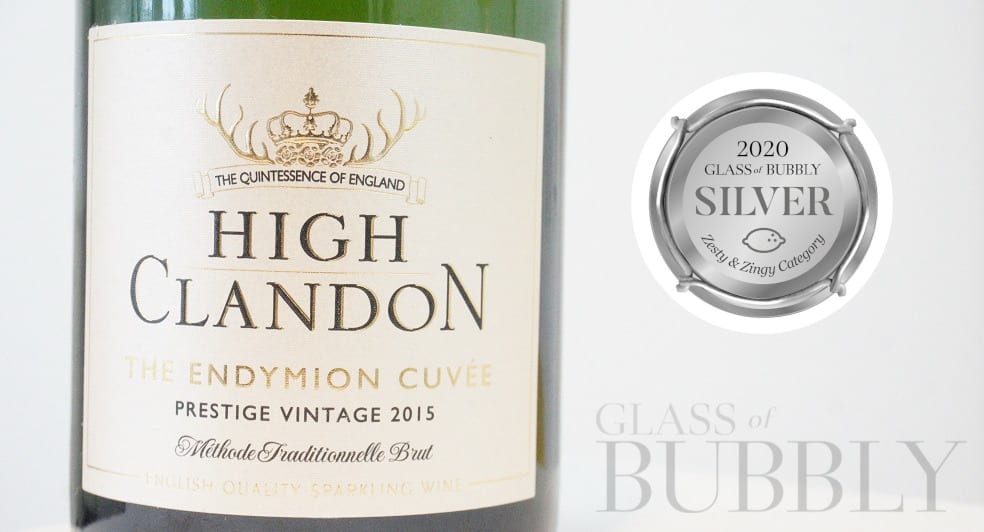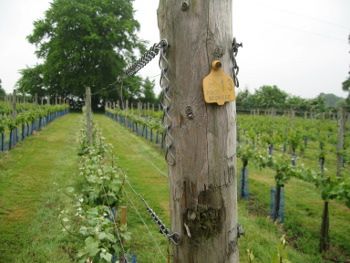Five Steps to Enjoying your Very Own English Sparkling Wine
4th July 2014

Is sipping a glass of English sparkling wine overlooking your own vineyard an impossible dream? Not to Bruce and Sybilla Tindale at High Clandon. They planted their vines in 2004, harvested in 2007 and enjoyed the first vintage of their very own fizz two years ago.
So, how did they do it? Well, it seems to me that there are 5 key steps. The first one is to work hard in your “day job” to afford to buy a suitable piece of land, ideally with a house on it, too. A geological map from Ordnance Survey at just £5.95 will enable you to follow the chalk sub-soil that’s like Champagne, if that’s your choice of style. Secondly, employ an expert to help you work out exactly where to put the vineyard and to help you source the best vines for your site – in this case Kevin Sutherland, who is now at Bluebell Vineyard was their advisor. It’s no good just relying on someone else, though, so a course at Plumpton College in Sussex is pretty much obligatory and gives you your number 3. Step 4 – work hard looking after your vines to produce a decent crop and finally, step 5, find yourself a good winemaker – the Tindales chose Sam Linter at Bolney, winner of many an award for both her own label wines and those produced under contract. So just 5 steps, but you will notice that a number of them involve working hard before you achieve that relaxed pose with your flute of fizz!
Susan & I had first tasted the High Clandon 2008 at last year’s members’ day at nearby Albury Vineyard and enjoyed this high-acidity wine made with traditional grape varieties. I had subsequently bought a bottle at Taurus Wines and as with any of the UK wines I like, was keen to see more of the story behind its production, so we leapt at the opportunity to visit them in English Wine Week this year.
Chardonnay, Pinot Noir and Pinot Meunier are grown on a site of about an acre, which is small enough for Bruce to manage himself, but enough in a good year to give themselves a glass each evening as well as some to sell. The wine is made using a “field blend”, where the grapes are all pressed together, rather than making a single wine from each grape and blending after the first fermentation. So the ratio between the grape varieties is defined by the planting and conditions, although some of the Chardonnay vines have recently been replaced with Pinot Noir to refine that slightly.
As with most UK vineyards, there is some community involvement and an exhibition of local artists had been set up with paintings in small marquees and sculptures throughout the garden for an event to launch the new vintage. The vineyard was then open by appointment throughout the following week.
Susan and I explored the gardens and the diminutive vineyard. We were then invited in to their lovely home for a tasting with Bruce who told us all about setting up the vineyard and how on a clear day the view stretches right up to London and includes the Gherkin and the Shard.
With Sam Linter making the wine, there is little input required after handing over their carefully nurtured grapes until it’s time to choose the dosage – the small amount of sugar that is added at he beginning of the second fermentation. As often seems to be the case, a drier wine is preferred by the producer than a commercial audience expects. In this case a pragmatic decision was taken to use 11g/l on two thirds of the wine to produce the 2009 Succession Cuvée, with 9g/l used in the remaining third to make the Ultra Cuvée.
It was a real privilege to be able to taste the wines with the grower and enjoy the fruits of their hard work – we bought a couple of bottles each and I don’t think it will be the last time we visit the cellar door of this local hidden treasure.
Shared by Elisabeth Else
![]()
Glass of Bubbly
Executive editor of news content for the website Please enjoy the articles that we share - We hope you find our love for Champagne & Sparkling Wines both interesting and educational.


